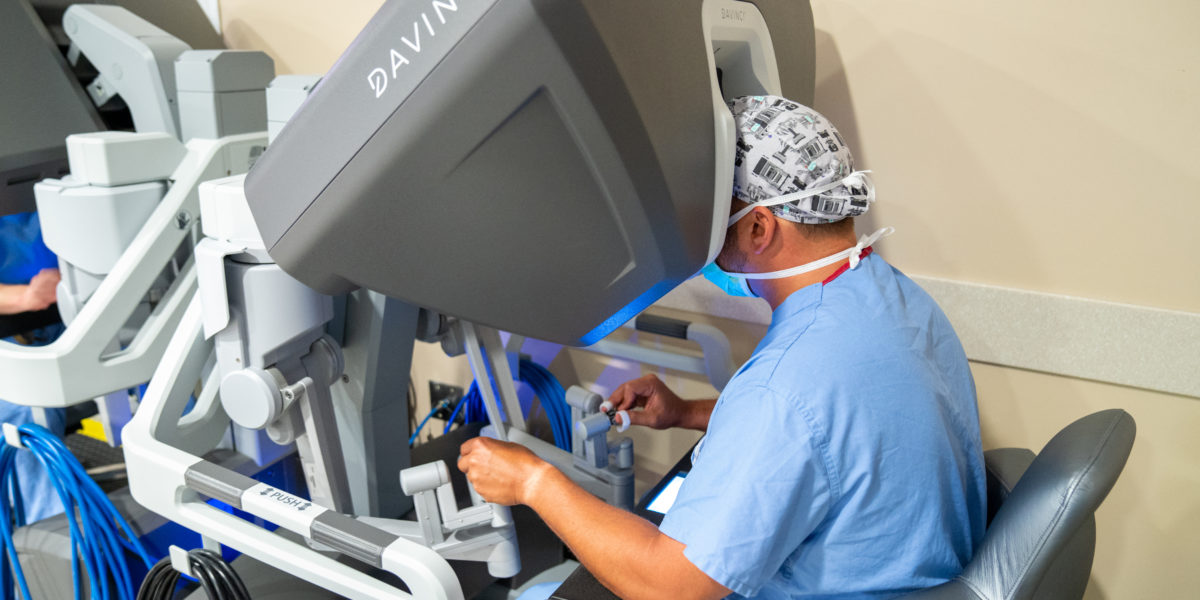When Nyda Wright underwent surgery for a hernia, her surgeon made the repairs – which included removing adhesions, closing the defect and inserting a new mesh covering to strengthen her abdominal wall – working about 15 feet away from where she lay on the operating table.
Seated at a surgical console in a corner of the operating room at ChristianaCare’s Wilmington Hospital, Peter Santoro, M.D., FACS, viewed magnified, 3D images of Wright’s abdomen taken from a camera inside her body.
As he looked at the high-definition images, Santoro manipulated the console’s controllers like a video game pro while his feet occasionally tapped the pedals. As the surgeon worked, the mechanical arms at Wright’s bedside mimicked the motion of the surgeon’s wrists, making precise cuts and stitches inside her abdominal cavity.
A day later, Wright was recuperating in her Carney’s Point, N.J., home, on her way to feeling good enough to resume taking care of her cats and assisting older family members.
“Using the robot seems a lot less strenuous on your body than being opened up,” Wright said at her follow-up appointment three weeks later. “For me, robotic is the way to go.”
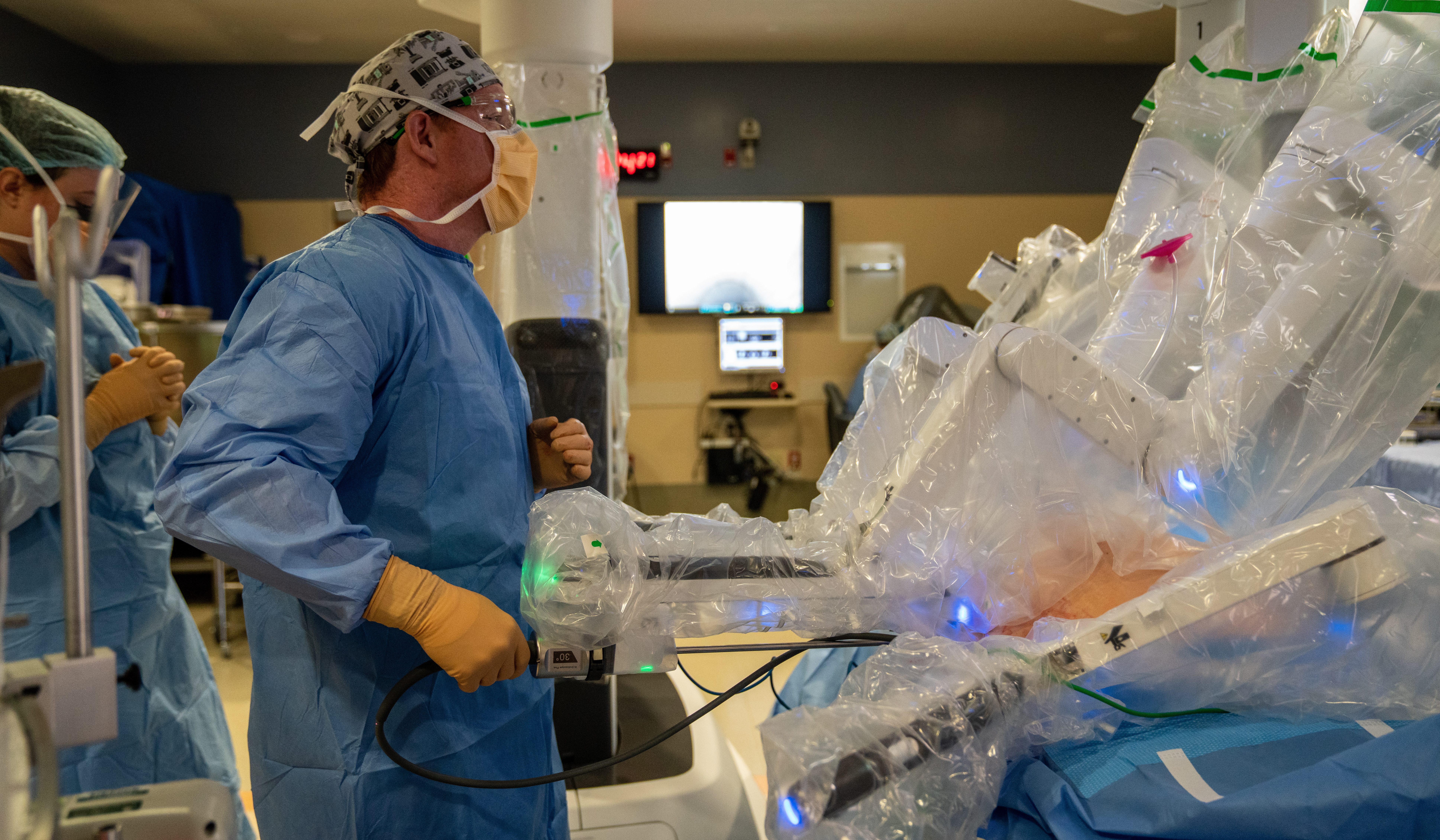
Robotic surgery is a type of minimally invasive surgery performed by surgeons with specialized skills and credentials. More than 20 ChristianaCare surgeons are credentialed to use one of the health system’s four state-of-the-art surgical robots, which can provide more precision and control than conventional open-surgery techniques.
Nationally, robotic surgeries account for about 15% of all surgeries. Robotic surgery is now used in areas including heart surgery, gastrointestinal surgery, general surgery, gynecology, thoracic surgery and urology, with additional specialties expected to adopt the technology in the future.

“Robotic surgery has really come into its own over the last few years,” said Gerard Fulda, M.D., FACS, MCCM, chair of the Department of Surgery at ChristianaCare.
“The real advantage to robotic surgery is that in most cases, the incisions are very small. If you’re not making a large incision in the patient, you’re causing less trauma to the tissues internally, as well as externally. That can result in less pain, shorter length of stay, less blood loss, fewer infections and a faster recovery – all very important aspects of surgery.”
Better patient experience
When patients need surgery, they often worry about their recovery time and how long it will take to resume their normal life.

The less-invasive approach of robotic surgery can help alleviate those fears because of the reduced need for hospitalization and quicker return to activities of daily living, said Emily Saks, M.D., MSCE, FACOG, a gynecologist who specializes in female pelvic medicine and reconstructive surgery.
She treats patients with pelvic floor disorders, including women with urinary incontinence and those experiencing pelvic organ prolapse – which occurs when the bladder, uterus or other pelvic organs slips from its normal position into the vagina.
“Most patients are going home the same day of their surgery, whether it’s a hysterectomy and or pelvic floor repair. It was never that way in the past when it was easily a two-night stay. People are up and move around better, they’re walking quicker, which is good for recovery in general,” Saks said.
“The idea is to get them back to what they love. Robotic surgery helps make that happen.”
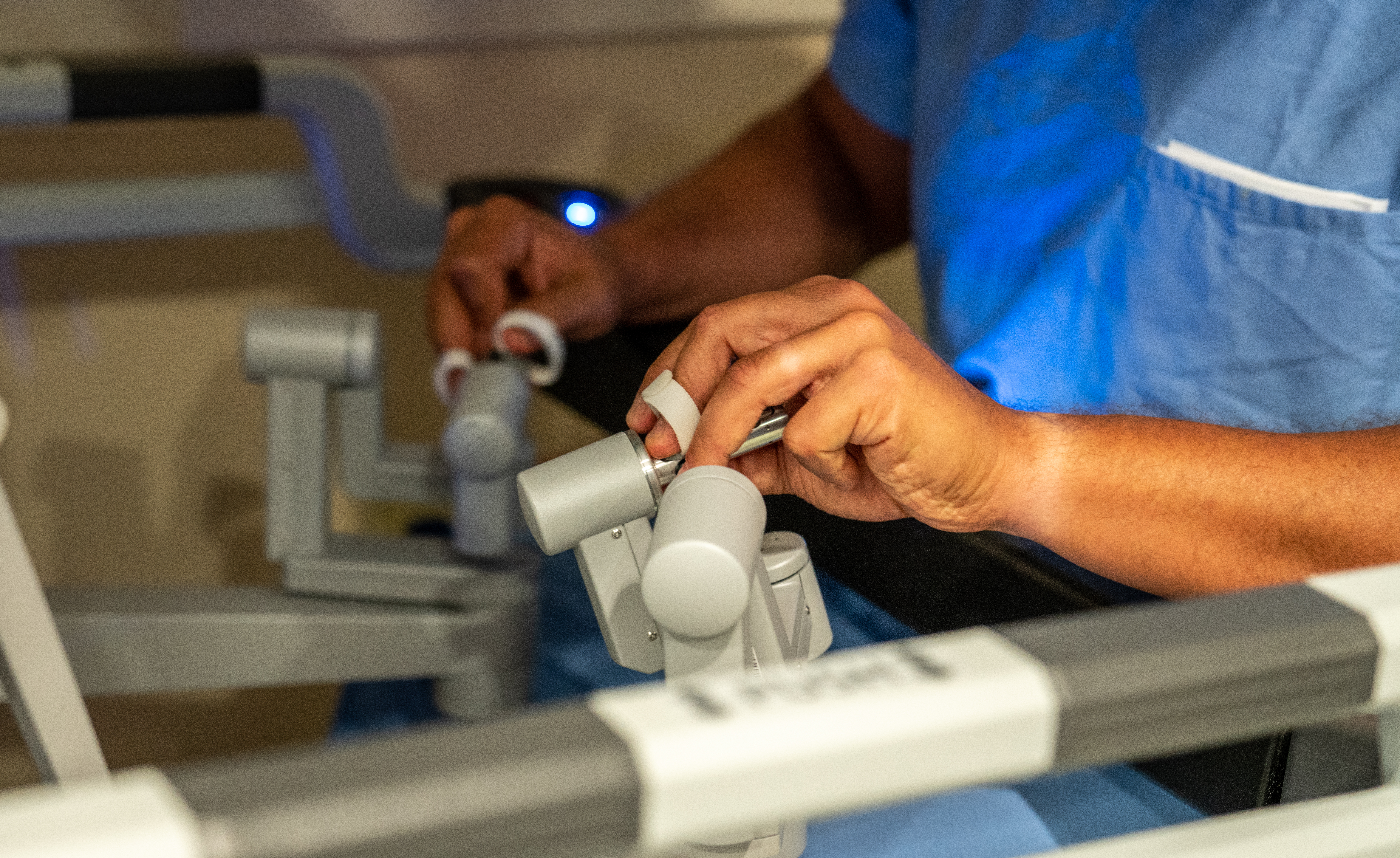
The flexibility provided by the robotic arms can help with fertility-sparing treatments, such as removing fibroids from a patient’s uterus, said Gretchen Makai, M.D., a gynecologist and director of the Division of Minimally Invasive Gynecologic Surgery.
“The robot allows us to get into some deeper, narrower spaces to remove fibroids and then perform a complex uterine repair. We often close incisions on the uterus in three or four layers to make sure that muscle heals well for a possible future pregnancy,” Makai said.
Less pain, fewer opiates
No matter how a surgical procedure is done, patient pain in the days that follow is always a concern, Fulda said. That fear can keep some patients from undergoing needed surgical care.
Using a high-definition surgical console, surgeons performing robotic procedures can zoom in to see blood vessels and better manage issues that can arise, such as bleeding. As a result, most patients who undergo robotic-assisted surgery report less post-operative pain, Fulda said. That has led to significant strides in decreasing opioid prescriptions to patients.
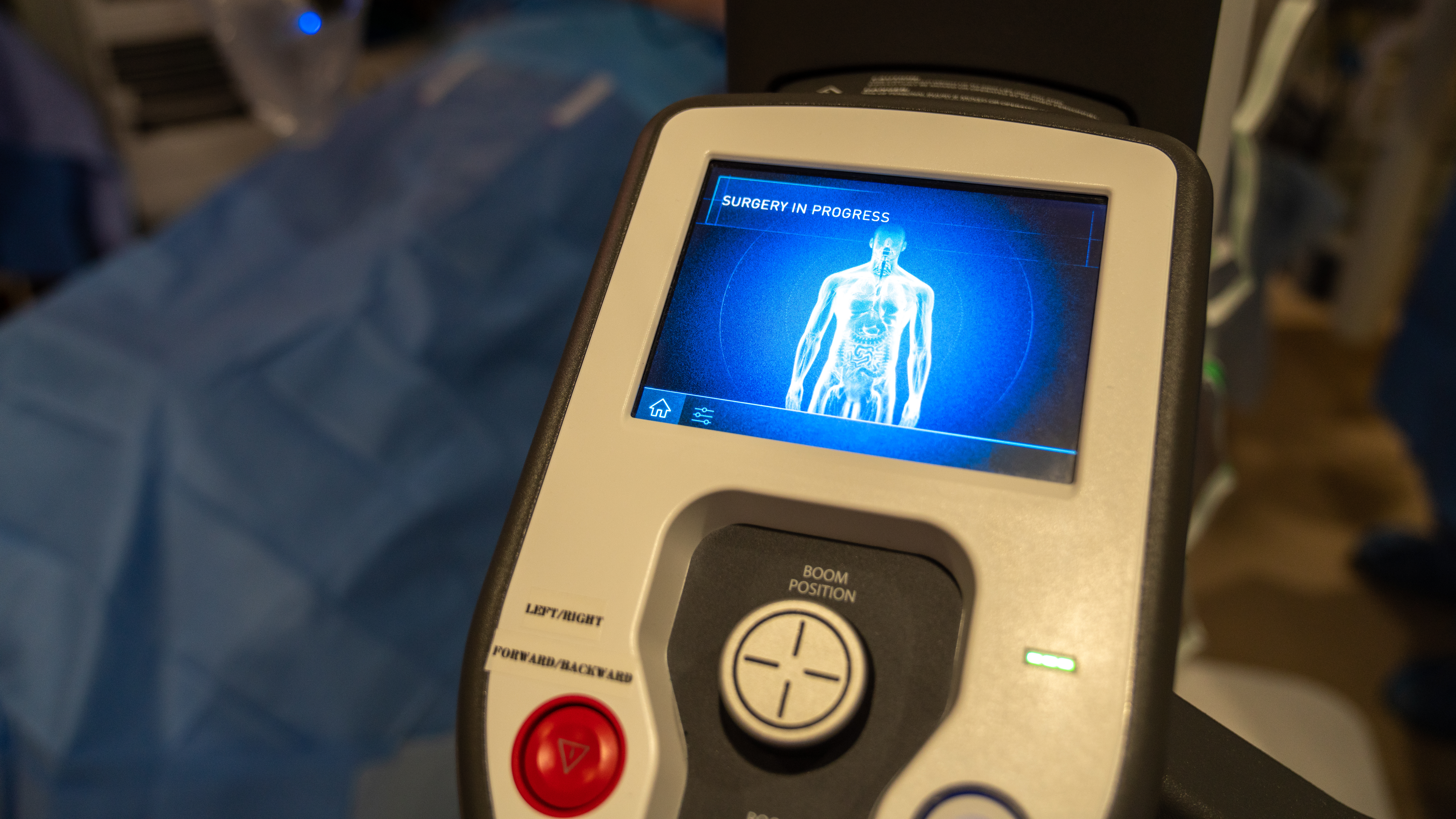
“About 6% of people who are exposed to opioids have the potential for addiction,” he said. “If we don’t have to prescribe as many opioids following a procedure, we can make a difference.”
Santoro, director of robotic surgery for ChristianaCare, section chief for general surgery and medical director of the Hernia Center at ChristianaCare, gives his patients a short survey at their first post-operative visit to gauge their recovery and need for pain relief.
“There are so many times where the pain the day after surgery was zero or the pain the day of the visit was zero,” Santoro said. “As far as pain management goes, it’s nice to see.”
Improved experience for surgeons, too
There also are benefits for surgeons who perform robotic-assisted procedures, including better imagery and magnification of the surgical view. The precision and flexibility provided by the robotic arms make it easier to work in delicate or hard-to-reach areas of the body. The robot also ensures smoother collaboration on complicated cases because surgeons use a common tool with multiple options, preventing a need for an open surgery.
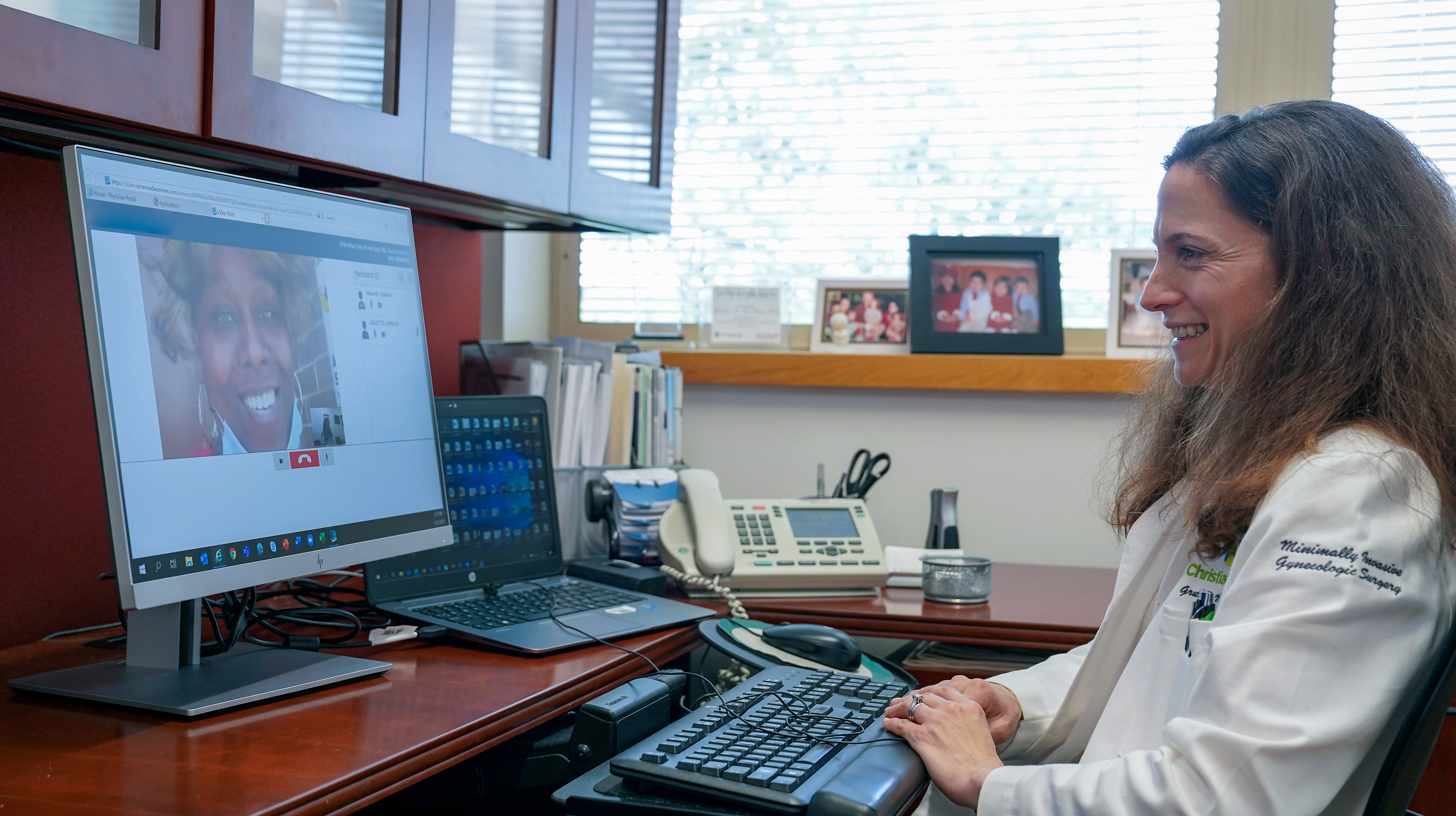
“When we do any really fine or complicated surgery minimally invasively, we often find the best approach is robotic,” Makai said.
“The ability of the robotic arms to move in almost 360 degrees to approach different angles is an advantage over traditional laparoscopic instrumentation. For surgeon ergonomics and fatigue during long surgeries, I think a lot of providers feel robotic surgery is advantageous.”
Candidates for robotic procedures
Most patients are candidates for robotic surgery, including patients that have traditionally open surgery, said Santoro, who has done more than 1,000 robotic-assisted procedures. When talking with patients about the robotic technique, he explains how the technology has dramatically improved the surgical experience for most patients, reducing their hospital stays and risk of wound infections.
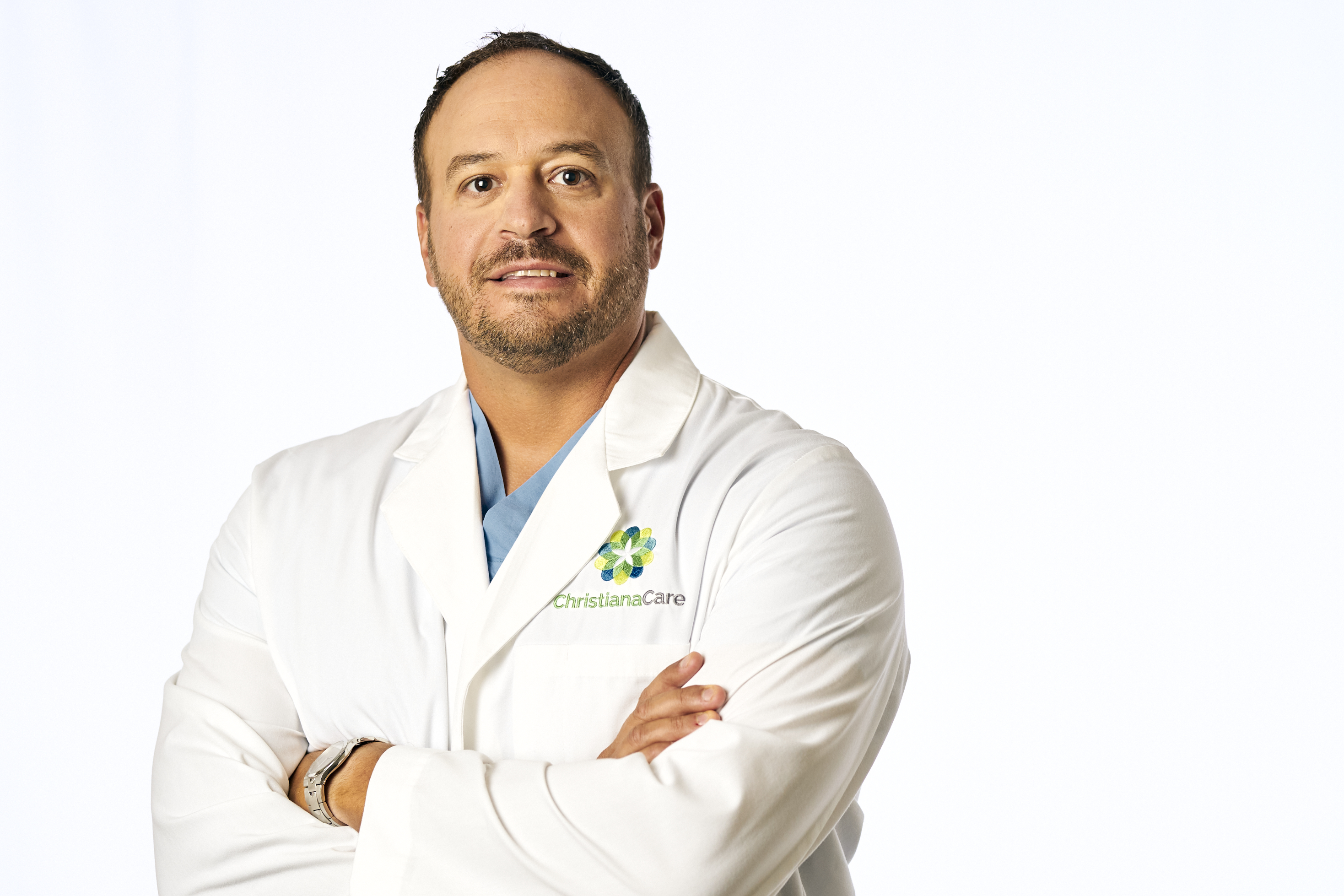
“From my standpoint, it really has revolutionized how we take care of hernia patients,” said Santoro. “And we are able to do all of that with three little 8-millimeter incisions.”
Townsend resident John Pancake opted to have his fifth inguinal hernia repair done robotically at Wilmington Hospital. After four previous surgeries, it didn’t take long for Pancake to see the difference this time in his recovery.
“I can feel how it is healing internally, instead of having an open cut. You can’t even really see the wounds that I have, and it’s only been a couple weeks,” said Pancake, who lives in Townsend, Delaware, and works as a landscaper.
“As far as the healing and recovery time, it’s very minimal. It’s been a great experience.”
